Wednesday morning, after another delicious breakfast of yogurt, soft-boiled eggs, veggie and pork sausage, and toast, we left for the nearest post office in the village of Thirsk, and then headed out for our day’s sites. It was another heavy misty day as we arrived at Fountains Abbey, the largest and best-preserved Cistercian monastery in England, though now in ruins. Founded in 1132, it operated for 407 years, becoming one of the wealthiest monasteries in England.
It all began with a riot in 1132. Thirteen monks were expelled from a Benedictine house in York but were taken under the protection of Archbishop Thurstan of York, who gave them land to set up a new place of worship. Along a tributary of the Ure River, in a valley called River Skell, it turned out to be the perfect spot. Stone and timber were close, and running water and six springs were nearby, hence the reason they called it Fountains Abbey.
A year later the monks applied to join the Cistercian Order, which had been flourishing in Europe and had grown to more than 500 houses. In 1135, Fountains became the second Cistercian house in northern England. Fountains fell under the purview of Clairvaux Abbey in Burgundy and followed the rule of Saint Bernard. A monk from the French abbey arrived to teach the monks the seven Canonical Hours, and how to construct buildings according to the Cistercian way.
In 1143, when Abbot Henry Murdac arrived and took over, the building of a new church was begun to replace the small stone church and timber buildings. The stone church gained an aisled nave of stone and a tiled roof. As soon as it was completed three years later, a mob, angry at the abbot for opposing William FitzHerbert as the new archbishop of York, attacked and burned down all the timber buildings, but the church remained. In 1147, Murdac resigned and became the archbishop of York.
A series of abbots came to Fountains, and each repaired and built on to the abbey through the years. A chapter house was added and more accommodations for the monks who kept arriving. During the European famine of 1194, Fountains supported the local people with food and shelter. During the first half of the 13th century, Fountains’ reputation and prosperity increased. An infirmary building was added to treat the sick. In the latter half of the century, eleven abbots came to preside over the abbey, but hard times came. First it was due to unwise financial decisions by forward selling their wool before it came to market. Then England increased taxes to fight the Scots, but the Scots invaded and demanded more taxes, followed by the devastation of the Black Death in 1348-1349.
From 1378 to 1409 was the Papal Schism within the Catholic Church, when bishops in Rome and Avignon both claimed to have the true pope. As a consequence, British abbots formed their own chapter to rule the order in England. This also brought difficulties for the next thirty years. From 1442 to 1495, three successive abbots finally brought stability, restoration, and prosperity. The number of monks increased from twenty-two to fifty-two, a new tower was built, and the infirmary was added on to. After an abbot paid to buy the abbey for himself, in 1539, the abbey was surrendered to King Henry and it was closed.
In 1540, the abbey and its land were sold by the crown to a member of Parliament, Sir Richard Gresham, who vandalized the abbey, selling Cardinal Wolsey its tapestries. In 1597, Sir Stephen Proctor then acquired the property and sold much of the stone to build Fountains Hall manor, which is still partly in ruin. The estate passed on to the Messenger family, who sold it to William Aislabie, who combined it with the Studley Royal estate. In 1983, Studley Royal Park, including the ruins of Fountains Abbey, was purchased by the National Trust.
When we arrived, we consulted our map of the grounds, which had multiple paths, and then made our way to the ruined abbey. A long, curved gravel walk took us there and then we were free to wind our way through its extensive grounds, between old stone walls, grassy paths, undercrofts, and towering walls. Each walkway revealed more magnificent arched windows and walls. The river ran right alongside the ruins, and with its gurgling flows and the birds swirling and diving all along its length, we were transported to an ancient time. There was even a carving of a pagan Green Man at the top of one window.
Then we decided to walk the long path around the grounds. We saw more pheasants in the grass. Geese followed us, and sheep were there to greet the visitor.
The path led us along the river to the royal water garden. We stayed to the east of the river so we could look across and see the short waterfall, the Temple of Fame on the hill, the Temple of Piety, and the Moon Pond. We walked past Saint Marie’s Church and across from it was a wide green meadow with an extensive deer park. There were at least twenty or more deer, does and bucks, nibbling along, all pretty tame and used to people walking by.
We kept up the pace and finally arrived back at the Visitors’ Center, where we took a break, had lunch in the café, and then went to the bookshop.
Originally we had planned to visit a second abbey and maybe a castle after that, but we were pretty tired from our long walk. So we opted to head back toward our B&B, where right next door was Newburgh Priory.
The structure is largely L-shaped, with the central part containing the grand manor. A building to the right was the café and on the left was a wall left standing. The courtyard served as the parking lot. When we pulled in to the left, we faced a piece of 1200’s history, inserted into the wall and protected under glass.
Stephen Wombwell, son of Lady Wombwell, stood at the front entrance waiting for people to gather for the 3:15 tour. Having fifteen minutes to wait we studied the plaque and we could not miss the swan laden water to the front of the property, known as the Pond. And high on a far hill, we could see the Kilburn White Horse, located on the southern flank of Sutton Bank, near Roulston Scar at the edge of the Hambleton table-land. It is 318 feet long by 220 feet high and covers about 1.6 acres. It is said to be the most northerly chalk hill figure in England. It was created in November 1857, and some accounts state that it was done by schoolmaster John Hodgson and his pupils, together with local volunteers.
At the appointed time, we were ushered into the house and then to go up the stairs to the right. We entered a large formal dining room, where a woman stood ready to give us the tour. Little did we know at the time that the woman who stood before us was Lady Hermione Jane Wombwell herself. She stood petite with bobbed gray hair and gray eyes. She possessed a gentle bearing and an understated sense of humor. She requested that we not take pictures, but said a booklet of the property was available for a small fee.
She gave a general introduction, talking about the property and the building. The land was granted to Robert de Mowbray by William the Conqueror. His brother, Roger de Mowbray, made it into a priory for canons of the Augustinian Order in 1145. Little is known of the priory for over three hundred years, aside from it being documented that Margaret Tudor stayed there in 1503 before meeting her future husband, James IV of Scotland.
In 1539, Henry VIII sold the property to Reverend Anthony de Belasyse. He and his brother Richard, who were Cardinal Wolsey and Thomas Cromwell’s agents, were trained as lawyers, and both helped to see that the dissolution of the monasteries was made legal. They were rewarded with a discount on their purchase of Newburgh Priory. Richard’s son, William, inherited the property, and it was he who destroyed the church that was there and converted the priory into a manor. The property was passed down within the Balasyse family until Henry Balasyse died in 1802, leaving the manor to his oldest daughter, Lady Charlotte. When she died without any children, the estate passed on to her sister, Lady Anne, who married George Wombwell in 1791, then a first-class cricketer and the 2nd Baronet.
Their son, also named George, inherited the 6,000-acre estate, and upon his death, his wife, the woman standing before us, became the owner. When she and George, arrived at the house in 1965, it had laid deserted for over twenty years. Rebuilding and repairs were begun. Their son, Stephen, and his wife Alice, now own the priory. Lady Wombwell lives off-site at another residence on the property, and she takes pleasure in giving the tours. The estate includes a large amount of farmland, commercial properties, a watermill, a local pub, and a livery yard. There are also extensive gardens, a water garden, topiaries, a walled garden, woodland walks, and the Pond.
Lady Wombwell led us on a tour of the complex, beginning with the dining room, then the Black Gallery, the Justice Room, Sir George’s study, the unfinished cursed room, the Royal suite of rooms, the stone staircase, the China staircase, the dressing room passage, the small drawing room, and the large drawing room, and most noted about the house — Oliver Cromwell’s tomb. Each room was very different from the other, and in different states of repair.
Lady Wombwell was very good at describing so many things about the history of the house and its people, things that are not in the pamphlet on the Priory. For instance, in the small drawing room, colonnades were added to the room from the wall to the right, so that the fireplace remained central on the far wall. She said it took three years to clean and rebuild the room. When they first saw the room, the wallpaper was nearly black from the fireplace smoke, vines were growing up one wall, mold was covering much of another wall, a small tree was growing in one corner, and in the center of the floor was a pond that had frogs living in it. We were shocked, as now the room was beautiful, with a Cortese scrolled ceiling, handsome carved furniture, fine needlepoint chairs, an immaculate marble fireplace, and old family portraits hung and were placed, of the famous families that had lived there.
The cursed room was upstairs over the dining room. It was the blackened shell of a room. The walls were peeled back to the bare boards and lath plaster, with a decidedly blackened tone. The story goes that in 1758, when Lord Fauconberg was rebuilding Newburgh as a Georgian home, the priory was gutted by fire. A maid was badly burned and later died. It was said that Henry, the 4th Viscount’s son, could have saved her but didn’t, as he preferred to put his own safety first. On her death bed, she laid a curse, saying that if the owner of the house should ever try to finish the room, then the son and his heirs would die an untimely death. Lord Fauconberg, not putting any belief in the curse, went on to rebuild. However, on the morning of the day on which workmen arrived to begin, he received a telegram informing him of his eldest son’s death in India. And later his second son in Africa was killed. So the room remains as it was.
Another story has to do with Cromwell’s tomb, which is upstairs and sits like the top of a pointed roof peak toward the front of the house, but indoors. Here it is believed are Oliver Cromwell’s bones, brought here by his third daughter, Mary, Countess of Fauconberg, and her husband, who used their influence to rescue the remains of Cromwell and move them to the Priory, minus the head. Henry VIII had him beheaded because he felt betrayed when Cromwell encouraged him to marry Anne of Cleves. The head was put on a pike and later moved to Cambridge. The tomb was originally hidden away in the roof gables, but between 1720 and 1760, the roof was raised, bringing the tomb into the room. The tomb has never been opened, although some have tried to get permission, but that has never been granted. On top of the tomb can be seen Oliver Cromwell’s death mask on a sculpted head.
There was one other story she told, which was even more surprising, about Mary of Teck, the grandmother of Queen Elizabeth II (queen from 1952 to 2022). Mary was the Duchess of York, the Duchess of Cornwall, the Princess of Wales, and the Queen of the UK from 1910 to 1936. She passed away in 1953.
The two stories Lady Wombwell told had to have been relayed to her, as she would have been just a child when Mary was on tour and visited Newburgh House. Apparently, the Duchess Mary smoked cigarettes, but would deny that she smoked. If she was alone and smoking and someone was coming, she would quickly put her cigarette out on the back of the nearest chair. This caused great concern, and someone would have to check the chairs after she left the room to make sure a fire would not start, and oftentimes, to repair any damage.
The second story was about her penchant for “collecting” small items wherever she went. Whether it was kleptomania, or her mistaken belief that all things in the kingdom were hers by default, over her lifetime she had collected many small objects. Wikipedia is diplomatic when they say that she “was an eager collector of objects.” And, “she has sometimes been criticized for her aggressive acquisition of objets d’art…. She would express to hosts, or others, that she admired something they had in their possession, in the expectation that the owner would be willing to donate it.” It was so concerning that, upon learning of her coming visits, the keyholes to cabinets holding precious items were filled in with putty so the cabinets could not be opened. After her death, when a list of her known possessions was compared to her entire collection, it was noted that many things did not appear on the official list and must have been taken without the owner’s consent. Lady Wombwell said that after Mary’s death, a room was opened with these objects for owners to come through and collect the items that they had found missing after her visits.
There were so many other things she had to say about the history of the house and the people that had come and gone through it. In one room she spoke of her husband’s favorite horse. When the animal passed on, he had its four hooves preserved. One of them was hollowed out and lined in silver. Lady Wombwell lamented when she said that her children had once used it as an ashtray. We loved her way of telling the history of the place and her family stories. She was so approachable and entertaining. When the tour was over, we bought a booklet about the rooms and then we went to the tearoom downstairs. We had tea and a slice of the double layered coffee-flavored cake with coffee icing that lady Wombwell had made herself, which her daughter in-law Alice, served to us. It was the perfect ending to a great day in a wonderful homey priory kept up and solely operated by the family.
Then it was just a quick jump in the car and drive right next door to our B&B. We rested, I wrote, and by 5:30 Vere had booked a reservation for dinner at 6:30 at the Durham Ox in the small town of Crayke, just ten minutes down the road. When we were seated, we found the walls were painted deep blood red with green chair rails, and the room was lit by wall sconces. Lobster cages were piled up outside, as they offered several different fish and shellfish for dinner. Vere had the bread board with humus and butter to start and I ordered the cheeseboard. On it were three cheeses: Delice de Bourgogne from France, which was a creamy cow’s milk cheese like brie; the Little Black Bomber, a cow’s strong cheddar from Wales; and Harrogate blue, a cow’s milk blue cheese from Thirsk. Then I had the small onion tart for a main, and Vere had the Ox Cheesy Baked Queenie Scallops, served in three large scallop shells with cheddar and Gruyere melted on them. Afterward, tired and full, we returned to the B&B for the evening.
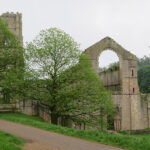
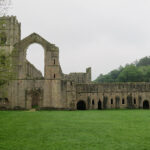
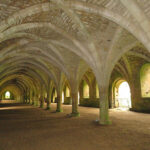
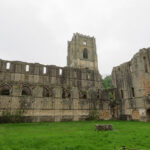
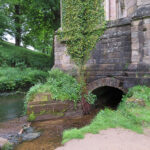
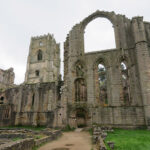
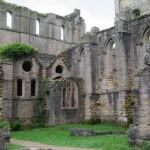
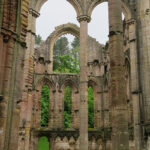
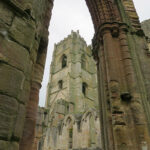
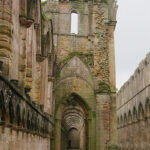
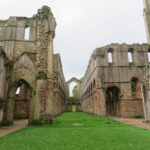
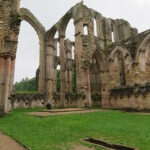
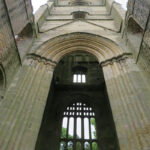
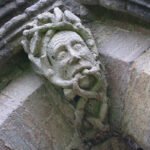
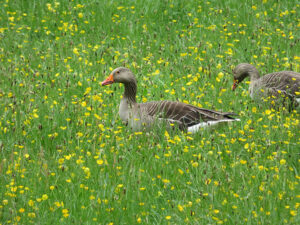
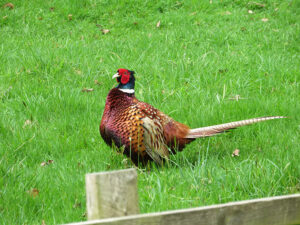
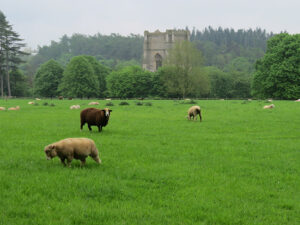
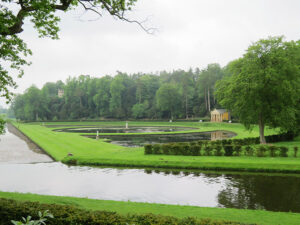
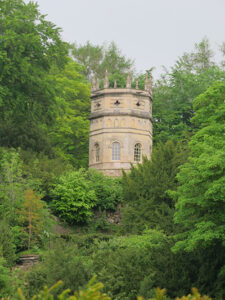
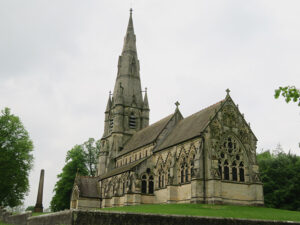
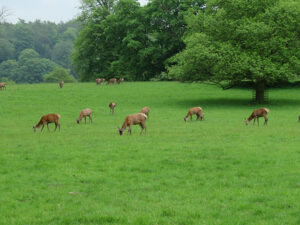
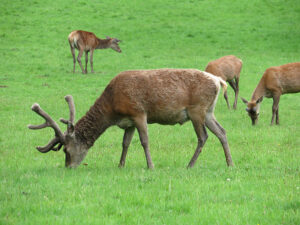
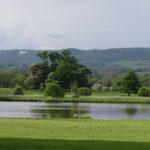
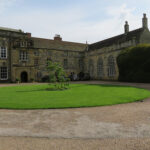
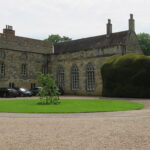
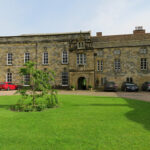
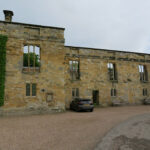
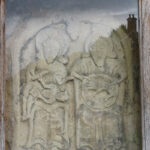
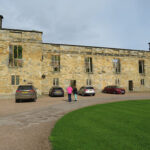
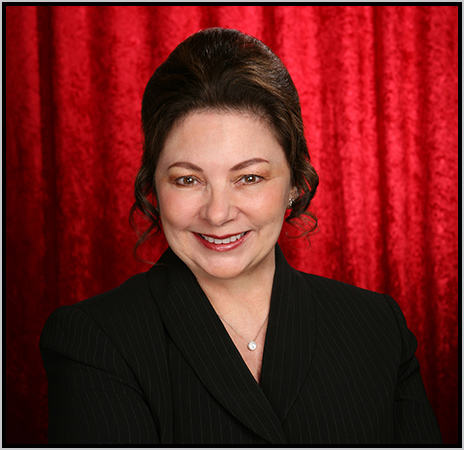 The official website of Lita-Luise Chappell, writer on sex, magic, food, distant lands, and everyday life with articles, poetry, novels, travelogues, rituals, cookbooks, and short-stories.
The official website of Lita-Luise Chappell, writer on sex, magic, food, distant lands, and everyday life with articles, poetry, novels, travelogues, rituals, cookbooks, and short-stories.
